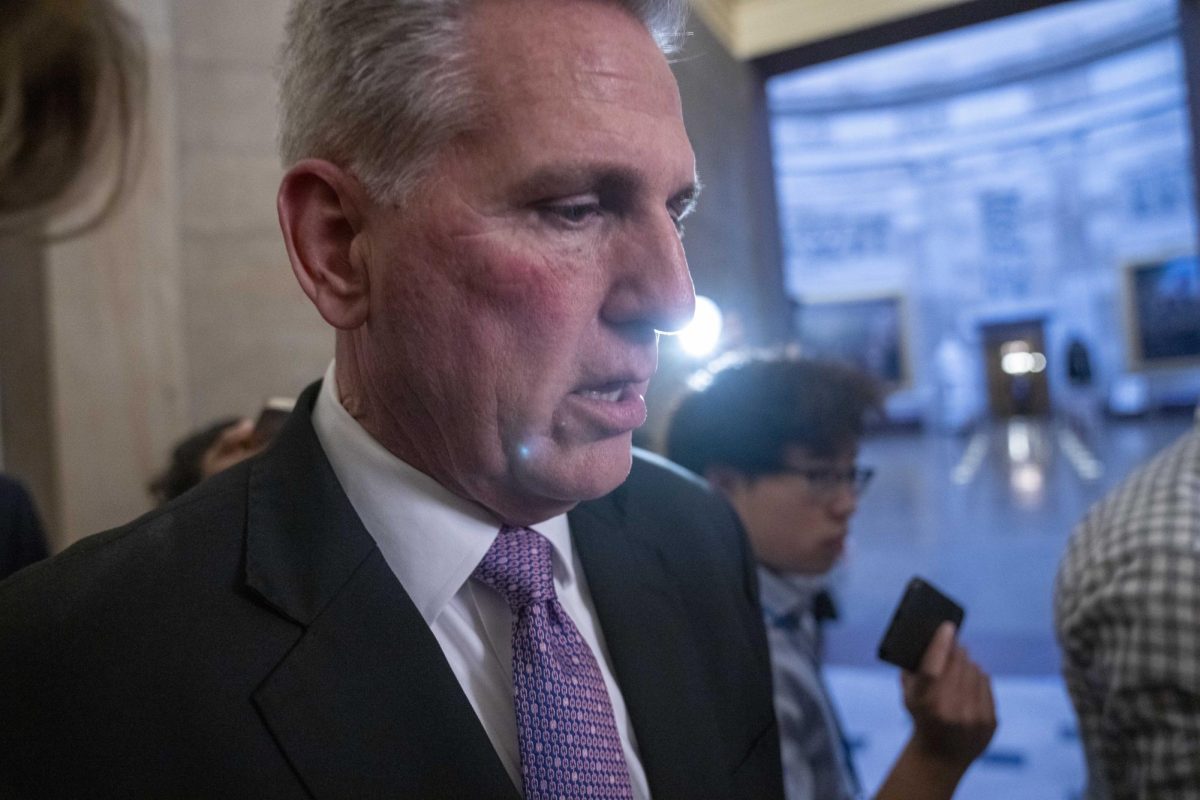Congressman Kevin McCarthy met the end of his tenure as Speaker of the House on Tuesday, Oct. 3. His removal was a longtime threat made by far-right Republicans since the beginning of his term as Speaker. His demise came from far-right Florida Representative Matt Gaetz, who was troubled by McCarthy’s compromise with Democrats to keep the government from a shutdown.
Gaetz called upon the obscure “motion to vacate” in the first of its kind to oust a Speaker. While McCarthy had a strong wall of Republican support, the party just barely holding the majority in the House, Gaetz was able to secure eight Republican votes to remove McCarthy. In a letter to his Democratic colleagues, Democrat Leader Hakeem Jefferies of New York chose to vote in favor of McCarthy’s removal. He is stated as wanting to work with Republicans, but refuses to help solve Republicans’ “civil war.” As of the writing of this column, Representative Steve Scalise of Louisiana has won the Republican nomination for Speaker of the House, and has since withdrawn from the running.
The removal of McCarthy as speaker was the first time in American history a Speaker had been removed before the end of their tenure. And due to the growing rifts within parties on both sides of the spectrum, we may be in for a massive shift in the way politics, government and party divides are understood. The parties of the United States have not always remained stagnant. This will not be the first time in America’s history that political parties have shifted.
Many of the founding fathers, responsible for the founding of the United States, disliked the idea of political parties, called factions at the time. But, inevitably, they very quickly formed factions and a two-party system came shortly after. The first political parties were the Federalists and the Anti-Federalists. The two had opposing perspectives on how far-reaching the federal government should be. Eventually, the Anti-Federalists shifted into the Jeffersonian-Republican party, soon known as the Democratic Republicans, which became extremely popular in the Southern parts of the country.
The two parties took on their Democrat and Republican names during the Reconstruction era, but their ideologies and platforms would not be recognizable for many years. The Democratic Party was mostly made up of Southern Democrats, also known as Dixiecrats, who were very pro-slavery and pro-segregation. During the Civil Rights era, Democrats led a mostly anti-civil rights caucus, as Southern Democrats continued to make up a majority of the national Democratic Party. It wasn’t until Presidents John F. Kennedy and Lyndon B. Johnson, who were Democrats and advocates for civil rights, that lifelong Dixiecrats became Republicans and the two parties shifted to become the political parties we know today.
In 2023, we are beginning to see a massive shift in the makeup of each political party. On the Republican side, extremely conservative, pro-Trump and far-right Republicans are making up more and more of the party’s population. Their anti-Democrat, Big Lie conspiracy propagation is proving to pose large problems for more moderate Republicans looking to barter and compromise with Democrats. And on the other side with the Democrats, we are seeing pro-market, much more moderate Democrats butt heads with the rising population of progressive Democrats who desire more left-leaning outcomes.
It is highly unlikely we will see a third, fourth or fifth party splinter off due to the lack of third-party representation in this country. But, the consistent back-and-forth and bickering within the parties is a sign that things are changing and allegiances are shifting. Next year’s presidential election and future elections will shape the way parties run, operate and look. We are entering into a new era of politics, and it is happening before our very eyes.



